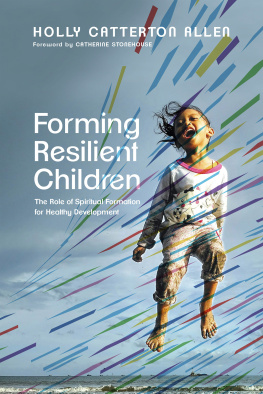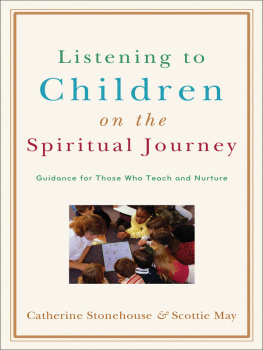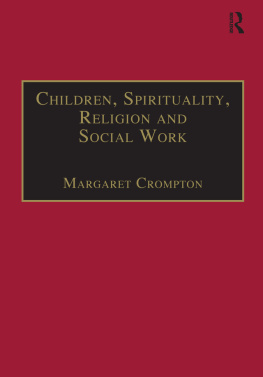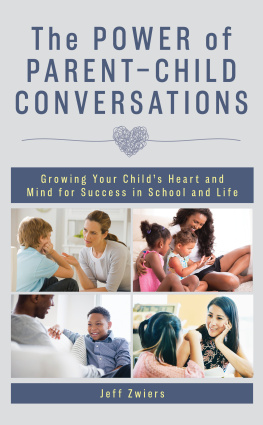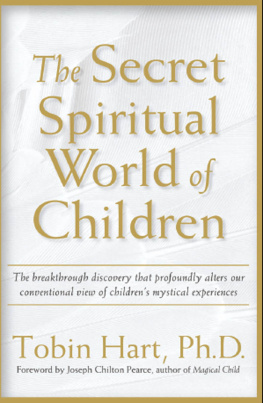Sommaire
Pagination de l'dition papier
Guide
SPIRITUAL
CONVERSATIONS
WITH CHILDREN
LISTENING TO GOD TOGETHER
LACY FINN BORGO
InterVarsity Press
P.O. Box 1400, Downers Grove, IL 60515-1426
ivpress.com
2020 by Lacy Finn Borgo
All rights reserved. No part of this book may be reproduced in any form without written permission from InterVarsity Press.
InterVarsity Press is the book-publishing division of InterVarsity Christian Fellowship/USA, a movement of students and faculty active on campus at hundreds of universities, colleges, and schools of nursing in the United States of America, and a member movement of the International Fellowship of Evangelical Students. For information about local and regional activities, visit intervarsity.org.
Scripture quotations, unless otherwise noted, are from the New Revised Standard Version of the Bible, copyright 1989 by the Division of Christian Education of the National Council of the Churches of Christ in the USA. Used by permission. All rights reserved.
While any stories in this book are true, some names and identifying information may have been changed to protect the privacy of individuals.
Cover design and image composite: Cindy Kiple
Interior design: Cindy Kiple
Cover image: mother and daughter painting: Archv / iStock / Getty Images Plus
All interior images are by Lacy Finn Borgo. Used with permission.
ISBN 978-0-8308-4833-1 (digital)
ISBN 978-0-8308-4669-6 (print)
This digital document has been produced by Nord Compo.
For the children at Haven House
Learning from Christopher
Reality [is] what you run into when you are wrong.
DALLAS WILLARD
A RMED WITH A MASTERS DEGREE in education and accolades for leading educational workshops for the New York State Teachers Union, I had no reason to question my firmly held knowledge on the growth and development of children. In my very young mind and heart I thought I knew all there was to know about childhood. Reality, a gift of grace, came knocking when Christopher walked into my fourth-grade classroom. It was only week two of the school year and he had already been shuffled from classroom to classroom and suspended from school altogether. I was the third and last fourth-grade teacher to welcome him into her classroom. One more incident and he would have to go to the alternative school for children with behavioral disorders.
Christopher was a smart kid, using whatever power he possessed for his survival. In my classroom the situation was no different. Within the first week he jumped out of the second-story window and shimmied down the fire escape to avoid a math test. Strangely enough, the break for both Christopher and me came when he was suspended from the cafeteria. His disruptive behavior had become an overwhelming obstacle for getting lunch served to eight hundred children. The lunch staff had no choice but to ban him from the cafeteria.
I had run into reality. I had no more knowledge to draw upon and the system had run out of beneficial options. In the beginning it was simply a matter of location. Christopher could not be in the cafeteria, so he ate lunch with me in our classroom. As lunch was my only break of the day, I had no desire to teach, lecture, or even change him. Over the course of our seven months of lunches, however, I began to become curious. Christopher talked all through our lunches. He would recount bits of his days or tell me stories about his family. Sometimes he would reflect on the deeper things in his life, like how he felt about his mother leaving, why he thought death was so scary, and the unbelievable kindness of our vice principal, Mr. Bell. I began to wonder what was going on inside of Christopher. Christopher had astonishing hope in the future and in the goodness of people; he possessed a mystery that I could not define or control.
As a Christ-follower I wondered what ways God was reaching for Christopher in all the mess. To preserve the public school separation of religious talk from academics, I began to ask Christopher about goodness rather than about God. What did goodness look like to him? When did something good happen to him? What was it like to experience goodness? At the time I knew little about the three great transcendental ideas: goodness, truth, and beauty. However, I knew that God was good and where goodness was, God was there too.
Inspired by my curious inquiry, Christopher opened up his inner world to me. There was more to Christopher than what was presented in his behavior, more going on in him than the school counselors could deduce. During our lunches I gave him no lectures, I taught him nothing. In fact, I spoke very little besides asking a few questions. Christopher made it through the fourth grade and even the fifth. He went off to middle school, but sometimes he would return to my classroom and hang around after class, longing to be listened to.
Christopher taught me how to listen. My time with him started a nearly thirty-year exploration into understanding the spiritual lives of children. This journey has yielded new insights, fresh understanding, deep empathy, and, most surprisingly, healing for my own childhood wounds. It is my hope that you will gain some of the treasures I have. This book presents what doctoral research and experience have taught me about having spiritual conversations with children. I began listening to God with children in 2014 at Haven House. Haven House is a transitional facility for homeless families. It is dorm-style living for homeless families that includes a two-year program designed to help move them into sustainable independence. I meet with children one-on-one as a spiritual companion to them. We call it holy listening, taken from Margaret Guenthers book on spiritual direction.
In this book we will explore how spiritual conversations with children support their life with God. We will learn not only what makes these conversations unique but also how to have them. We will begin by learning from Jesus. Jesus had a hospitable and welcoming posture toward children. We will uncover the role of longing, belonging, and connection in a childs life with God. Diving into spiritual formation with children as a guide for spiritual growth, we will think deeply about the four elements of childrens spiritual formation and the implications for children and the adults who long to accompany them. We will take a look at three Psposture, power, and patternsand how each of these shape spiritual conversations with children. We will notice the natural power dynamic between adults and children and how Jesus used his body to empower and honor children.
Pushing against our natural inclination to talk at or teach children, we will learn how our eyes and ears help us to contemplatively listen to children, and further how this listening opens a child to respond to Gods invitation. We will learn from children how play and projection help them to experience God and reflect upon their life in light of that experience. As we become more fluent in play and projection, we will learn how to help children recognize the Spirits movement in their life and respond to this movement in a way that is unique to their natural inclinations.



